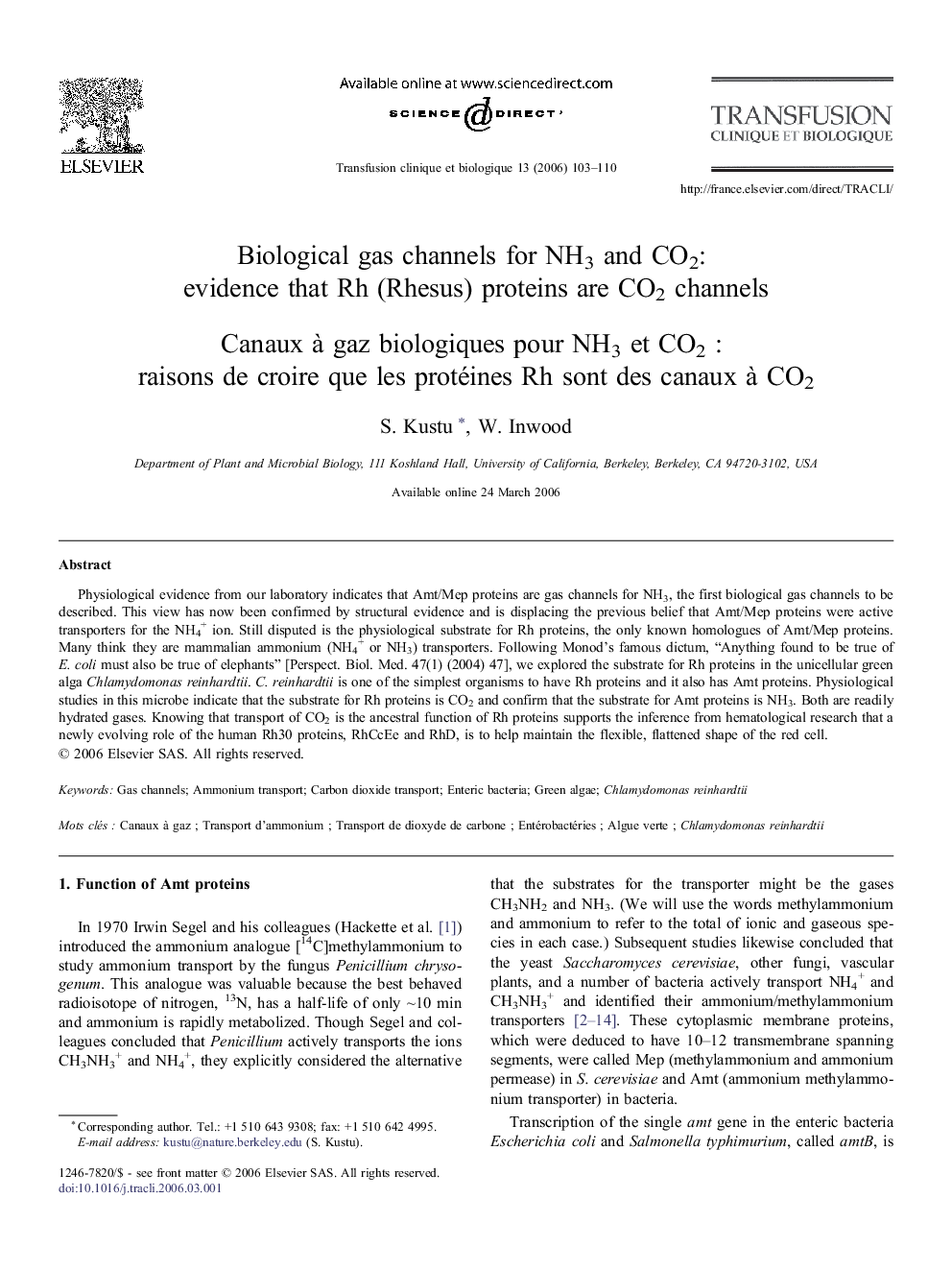| Article ID | Journal | Published Year | Pages | File Type |
|---|---|---|---|---|
| 1105976 | Transfusion Clinique et Biologique | 2006 | 8 Pages |
Physiological evidence from our laboratory indicates that Amt/Mep proteins are gas channels for NH3, the first biological gas channels to be described. This view has now been confirmed by structural evidence and is displacing the previous belief that Amt/Mep proteins were active transporters for the NH4+ ion. Still disputed is the physiological substrate for Rh proteins, the only known homologues of Amt/Mep proteins. Many think they are mammalian ammonium (NH4+ or NH3) transporters. Following Monod's famous dictum, “Anything found to be true of E. coli must also be true of elephants” [Perspect. Biol. Med. 47(1) (2004) 47], we explored the substrate for Rh proteins in the unicellular green alga Chlamydomonas reinhardtii. C. reinhardtii is one of the simplest organisms to have Rh proteins and it also has Amt proteins. Physiological studies in this microbe indicate that the substrate for Rh proteins is CO2 and confirm that the substrate for Amt proteins is NH3. Both are readily hydrated gases. Knowing that transport of CO2 is the ancestral function of Rh proteins supports the inference from hematological research that a newly evolving role of the human Rh30 proteins, RhCcEe and RhD, is to help maintain the flexible, flattened shape of the red cell.
